Maintaining a well-manicured lawn requires more than just regular mowing; it also involves ensuring that your lawn mower is set up correctly. One of the most critical aspects of this setup is the position of the lawn mower blade.
Correct blade positioning not only ensures a clean cut but also promotes healthier grass growth and can extend the life of your lawn mower. In this post, we will explore everything you need to know about the correct position of a lawn mower blade. let’s get started…
What is Correct Position for Lawn Mower Blade
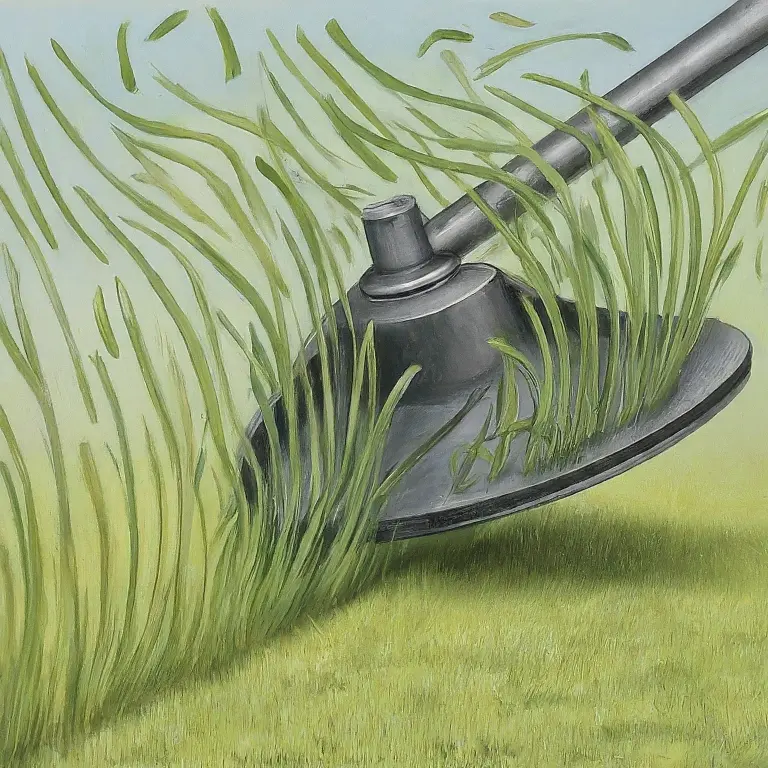
The Anatomy of a Lawn Mower Blade
Before we tackle positioning, let’s get familiar with the key parts of a lawn mower blade:
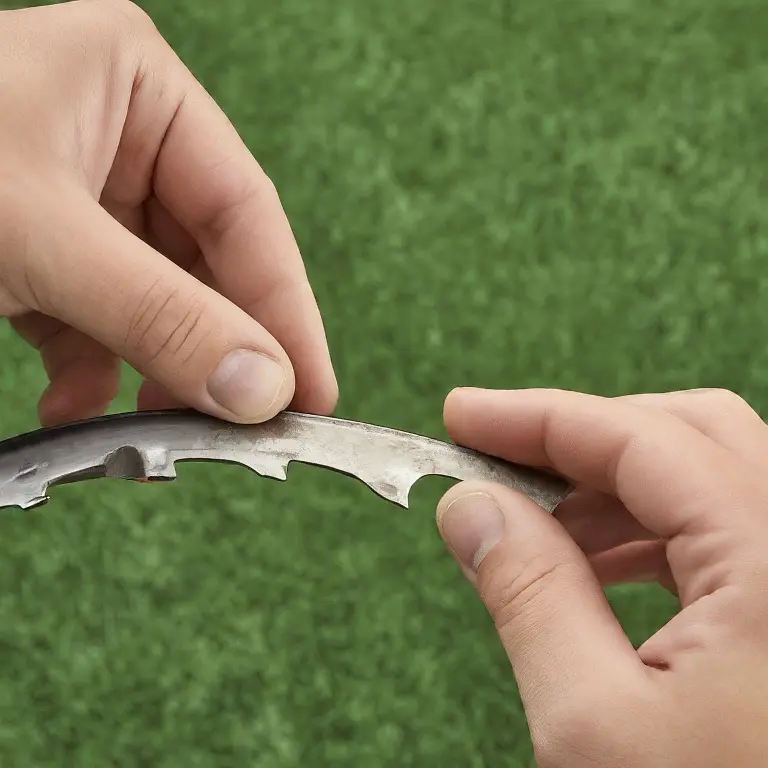
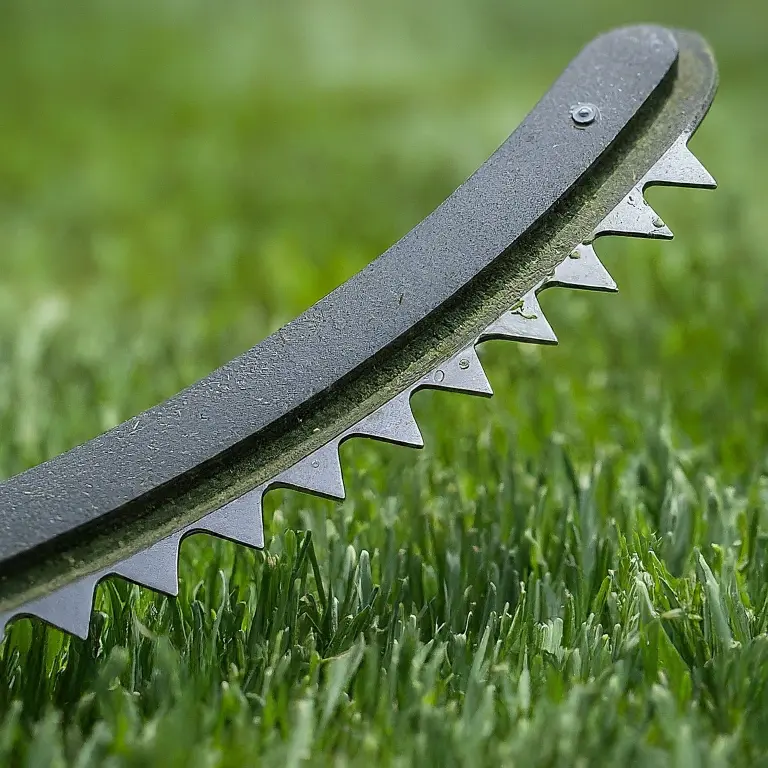
- Sharp Edge: This is the business end of the blade, responsible for slicing through grass. It’s typically thinner and angled for optimal cutting.
- Dull Edge (Lifted Wing): The opposite side of the sharp edge, often featuring a slight bend or “lift.” This raised edge helps lift and circulate the cut grass clippings.
- Center Hole: This hole fits onto the lawn mower’s crankshaft, securing the blade in place.
Read Are Cub Cadet Blades Reverse Threaded(Answered)
The Crucial Upward Tilt: Why It Matters
The critical aspect of proper blade positioning is the upward tilt. Here’s why it’s important:
- Lift and Cut: The raised, dull edge (lifted wing) acts like a mini airfoil. As the blade spins, it creates airflow that lifts the grass blades before they’re cut by the sharp edge. This ensures a clean, even cut.
- Efficient Clipping Discharge: The airflow created by the tilted blade also helps propel the cut grass clippings upwards and into the mower’s discharge chute or collection bag. This prevents clippings from accumulating on the lawn, which can smother the grass and hinder growth.
Identifying the Correct Blade Orientation
Lawnmower blades are generally symmetrical, meaning they can physically fit on the crankshaft in either direction.
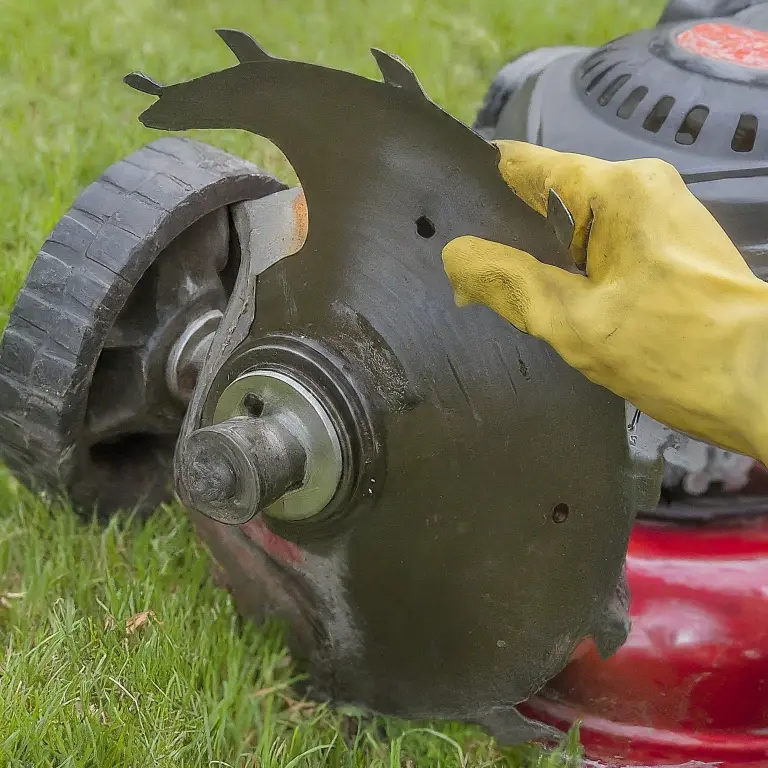
However, there’s a right and wrong way when it comes to achieving a clean cut. Here are two methods to identify the correct blade orientation:
- The Lifted Wing Method: Look for the raised or lifted edge on the dull side of the blade. This edge should be pointing upwards when the blade is installed. Imagine the raised edge scooping the grass upwards before it’s cut by the sharp edge.
- The Rotation Method: This method requires consulting your lawn mower’s manual to determine the crankshaft’s rotation direction (usually clockwise or counter-clockwise).
- With the mower on its side (spark plug disconnected for safety! ), place the blade on the crankshaft as if to install it. Turn the blade in the same direction the crankshaft rotates. If the sharp edge rotates upward, you’ve got the correct orientation.
Read Mulching Blades Vs Gator Blades(Which One Reigns Supreme)
Why Blade Position Matters
The position of your lawn mower blade affects the efficiency and effectiveness of your mowing. Proper blade positioning ensures that the grass is cut evenly, which promotes uniform growth and a healthier lawn.
Incorrect positioning, on the other hand, can result in uneven cuts, scalping, and damage to the grass, leading to an unsightly and unhealthy lawn.
Identifying the Correct Position
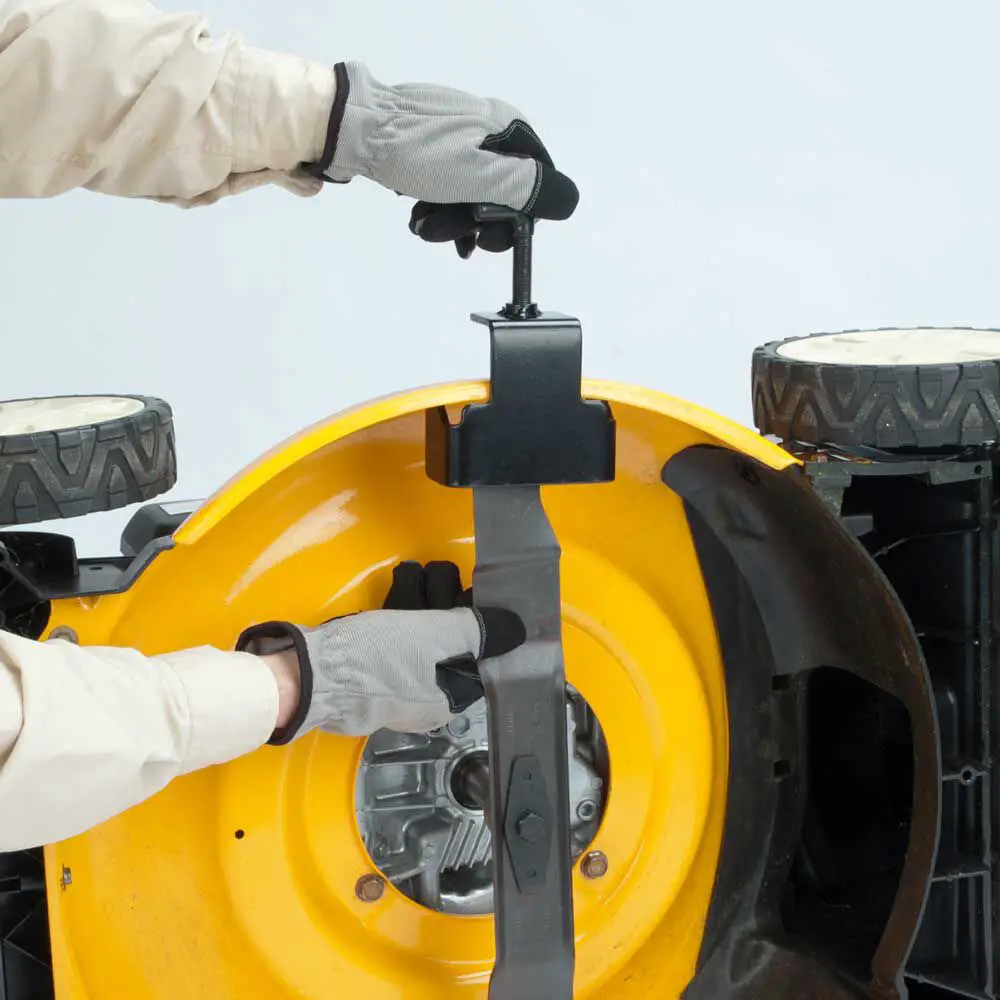
Blade Orientation
The orientation of the blade is essential. Most lawn mower blades have a curved or angled edge, and it is crucial to ensure that this edge is facing the right direction. Typically, the sharpened edge should face the direction of rotation, allowing it to cut the grass efficiently.
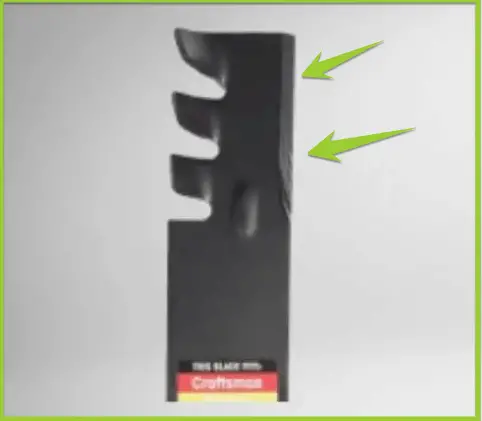
Height Adjustment
Adjusting the height of your lawn mower blade is vital for achieving the desired grass length. Most mowers come with adjustable height settings, allowing you to raise or lower the blade as needed. The correct height setting depends on the type of grass and the time of year.
For example, during the growing season, a higher blade setting can help maintain a lush lawn, while a lower setting is suitable for a neater appearance.
Leveling the Blade
A level blade ensures an even cut across the entire lawn. To check if your blade is level, you can use a simple leveling tool or a flat surface. Place the mower on a flat surface, and measure the distance from the blade to the ground on both sides. Adjust the mower deck if necessary to ensure that the blade is level.
Read Riding Mower Making Noise When Blades Are Engaged(Fixed)
Steps to Position Your Lawn Mower Blade Correctly
1. Safety First
Before you begin adjusting the blade, make sure the mower is turned off and disconnected from any power source. Wear protective gloves to avoid injuries from the sharp edges of the blade.
2. Inspect the Blade
Check the condition of the blade for any signs of damage or wear. A dull or damaged blade should be sharpened or replaced to ensure efficient cutting.
3. Determine the Direction of Rotation
Identify the direction in which the blade rotates. This information is usually found in the mower’s manual. The sharpened edge of the blade should face the direction of rotation.
4. Adjust the Height
Set the desired height using the mower’s adjustment lever. Ensure that both sides of the mower are set to the same height for an even cut.
5. Level the Blade
Use a leveling tool or measure the distance from the blade to the ground on both sides of the mower. Adjust the mower deck as needed to ensure the blade is level.
6. Secure the Blade
Once the blade is in the correct position, secure it tightly with the appropriate bolts. Ensure that the blade is firmly attached to avoid any wobbling or loosening during operation.
Read One Mower Blade Lower Than the Other(Fix this In 3 Steps)
Common Mistakes to Avoid
Incorrect Blade Orientation
One of the most common mistakes is installing the blade upside down. Ensure that the sharpened edge faces the direction of rotation for effective cutting.
Uneven Height Settings
Setting the height unevenly can result in an uneven cut and damage to the grass. Always double-check the height settings on both sides of the mower.
Neglecting Blade Maintenance
A dull or damaged blade can tear the grass rather than cut it cleanly, leading to a ragged appearance and potential grass diseases. Regularly inspect, sharpen, or replace the blade as needed.
Read Are Bad Boy Mower Blades Reverse Thread?(Find Out Now)
Tips for Lawn Mower Blade Maintenance
Sharpening the Blade
A sharp blade ensures a clean cut and promotes healthy grass growth. Use a sharpening tool or take the blade to a professional to maintain its sharpness.
Balancing the Blade
An unbalanced blade can cause vibrations and uneven cuts. After sharpening, balance the blade by ensuring that it is evenly weighted on both sides.
Seasonal Adjustments
Different seasons require different blade settings. In spring and summer, higher blade settings encourage thicker growth, while lower settings in the fall prepare the lawn for winter.
Read Where to Buy Laser Edge Mower Blades(3 Best Places)
FAQs
How often should I sharpen my lawn mower blade?
Sharpen your lawn mower blade after every 20–25 hours of use. This ensures a clean cut and reduces the strain on the mower.
Can I use any type of blade for my lawn mower?
No, it is essential to use the blade type specified for your mower model. Using the wrong blade can result in poor performance and potential damage to the mower.
What should I do if my blade becomes unbalanced?
If your blade becomes unbalanced, use a balancing tool to even it out. If you are unsure how to do this, take it to a professional.
Is it necessary to level the blade every time I mow?
It is not necessary to level the blade every time, but it is a good practice to check periodically, especially if you notice uneven cuts.
Can I adjust the blade height while the mower is running?
No, always turn off the mower and disconnect it from any power source before making any adjustments to avoid accidents.
How can I tell if my blade is dull?
A dull blade tears the grass rather than cutting it cleanly. If you notice ragged edges on the grass after mowing, it is time to sharpen the blade.
Final Words
Ensuring the correct position for your lawn mower blade is crucial for maintaining a healthy and attractive lawn. By following the guidelines outlined in this post, you can achieve an even cut, promote healthier grass growth, and extend the life of your lawn mower.




